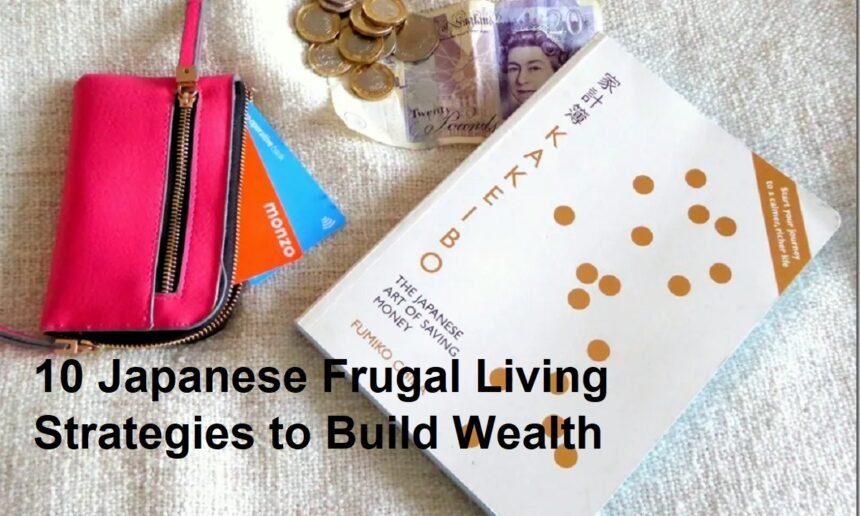Introducing
When I think about building wealth, the advice you often hear is usually pretty universal: spend less than you earn, invest early, and stick to a budget. But if you’ve ever been curious about how people in Japan approach frugality, you’ll find their methods both inspiring and refreshingly mindful. Japanese frugal living—or “setsuyaku”—isn’t just about cutting corners, but about cultivating a lifestyle driven by intention, respect for resources, and long-term planning. Here are ten Japanese frugal living strategies that can help anyone on their journey to financial security and freedom.
1. Embrace Minimalism
Japanese culture is globally admired for its minimalist aesthetic, and this philosophy translates directly into how people manage their living spaces and financial lives. I love how minimalism isn’t about deprivation but about cherishing only what adds value. Decluttering your home, buying only necessities, and focusing on quality over quantity can save substantial money in the long run.
2. Practice Kakeibo—The Art of Saving Money
Kakeibo is a traditional Japanese budgeting system that has been around since the 1900s. It literally translates to “household financial ledger.” The habit is simple: write down your income, expenses, savings, and goals by hand. This conscious process keeps spending in check and helps you reflect on your financial habits. Personally, I find the ritual of pen-to-paper budgeting oddly soothing and far more effective than digital apps.
3. Appreciate “Mottainai” (Waste Not, Want Not)
The word “mottainai” captures the sense of regret when something valuable is wasted. Before throwing anything away, consider how you could reuse, repair, or repurpose it. Whether it’s turning leftover rice into onigiri for tomorrow’s lunch or using jars for storage, this attitude can significantly cut costs over time.
4. Cook at Home and Pack Bento Boxes
Dining out in Japan is a special occasion, not an everyday habit. Home-cooked meals—often packed in neat, compartmentalized bento boxes—are celebrated for their nutrition, simplicity, and thriftiness. Preparing meals in advance and bringing lunches to work curbs impulse spending and allows for healthier, more affordable meals.
5. Use Public Transport and Walk More
Car ownership in Japan is expensive, so many people rely on efficient public transportation or simply walk or bike as much as possible. By minimizing car use, you can dissolve recurring expenses like fuel, insurance, and parking, and enjoy the health benefits too. I always marvel at how this daily practice costs less and builds a more active lifestyle.
6. Invest in Durable, Quality Goods
Instead of buying the latest gadget every year, adopting the Japanese approach means investing in fewer, high-quality items that stand the test of time. I’ve learned to eschew fast fashion and gadgets that become obsolete quickly, opting instead for things that truly last.
7. Share and Swap Within Your Community
Community-oriented living is strong in Japan. Sharing tools, swapping clothes, or lending household items reduces individual expenses. Participating in local events or markets can foster relationships that make everyday living more affordable—and more meaningful.
8. Cultivate Mindfulness in Spending
Every purchase is treated as a decision, not a default. Before any spend, there’s a moment of consideration: Do I really need this? Is it worth the time I spent earning the money? This mindfulness curbs impulse buys and ensures your hard-earned yen (or dollars) are put to good use.
9. Repair and Maintain
In Japan, fixing things is a source of pride, not inconvenience. Whether it’s darning socks, mending clothes, or repairing electronics, extending the life of your belongings preserves both the item and your savings. I’ve learned the value of a basic sewing kit and a little patience.
10. Reflect and Adjust
Finally, there’s a strong culture of self-reflection in Japanese daily life, including money habits. It’s customary to review your expenses at the end of the month, celebrate successes, and adjust plans for next month. This simple reflection is a powerful tool for long-term financial growth.
By weaving these ten strategies into your life, building wealth becomes less about restriction and more about mindful abundance. Frugal living ala Jepang is, at its heart, a celebration of simplicity, gratitude, and making every choice—and every yen—count.












